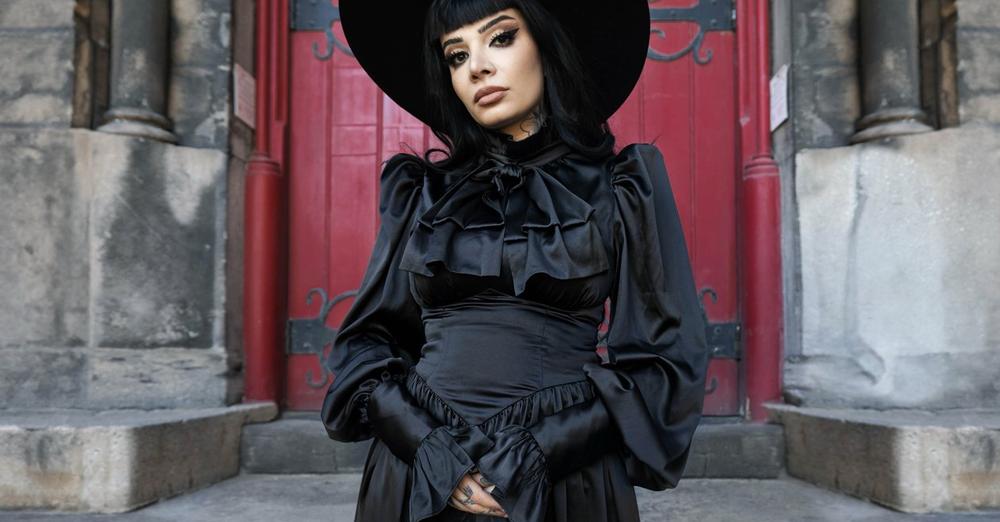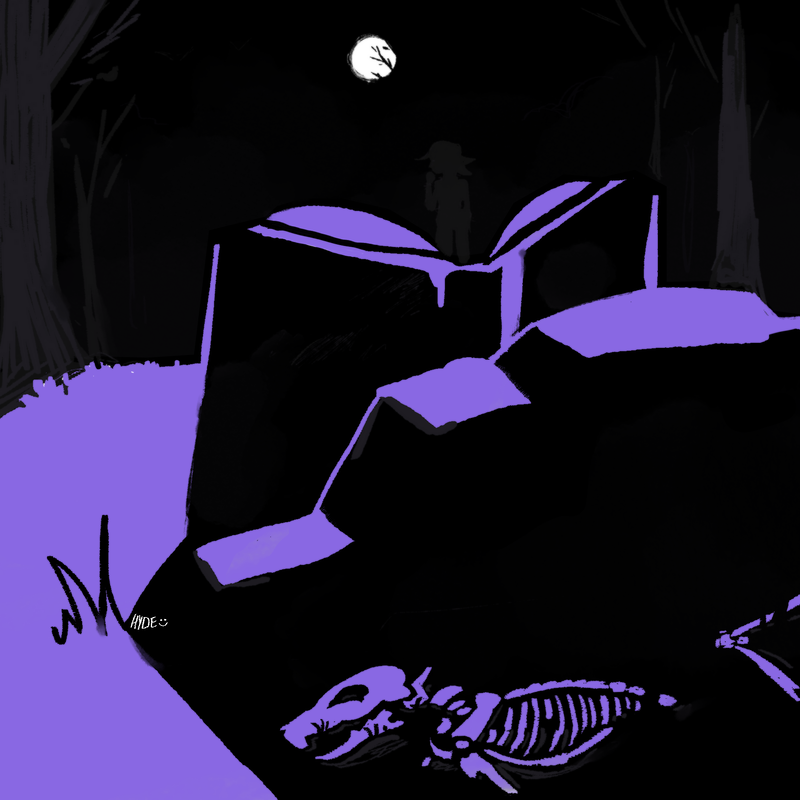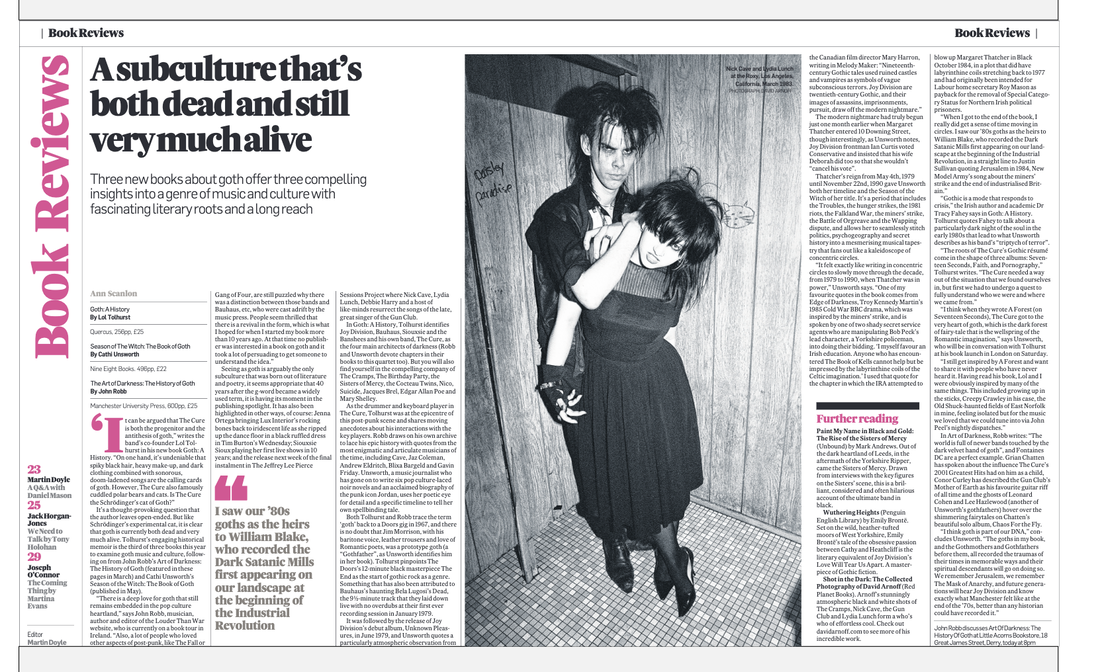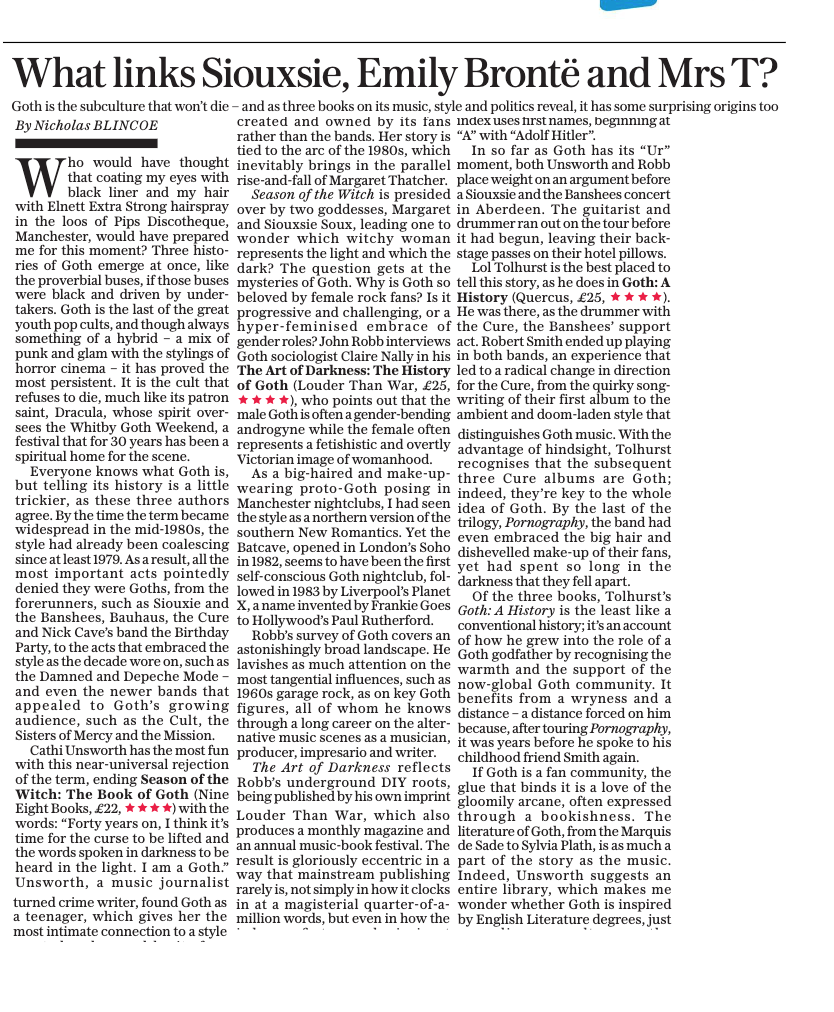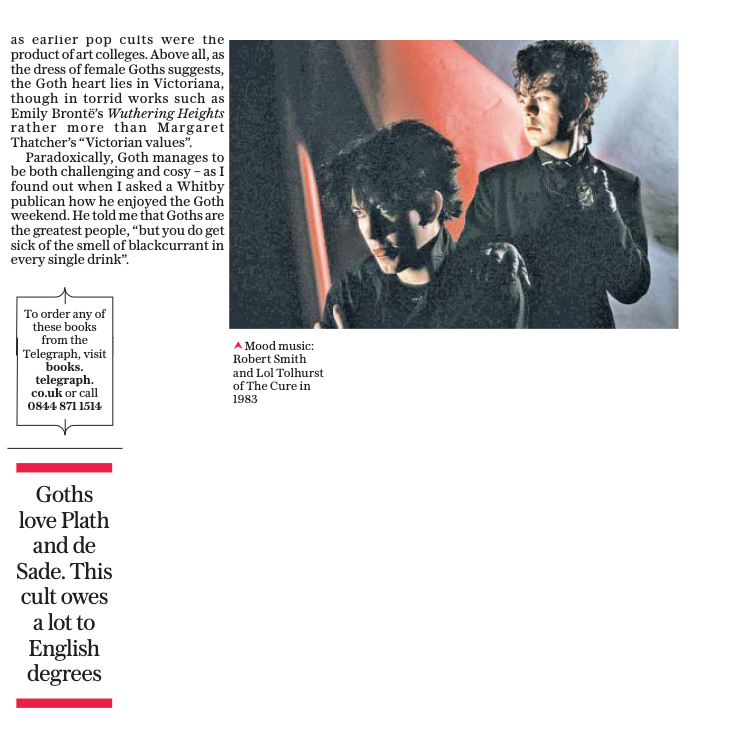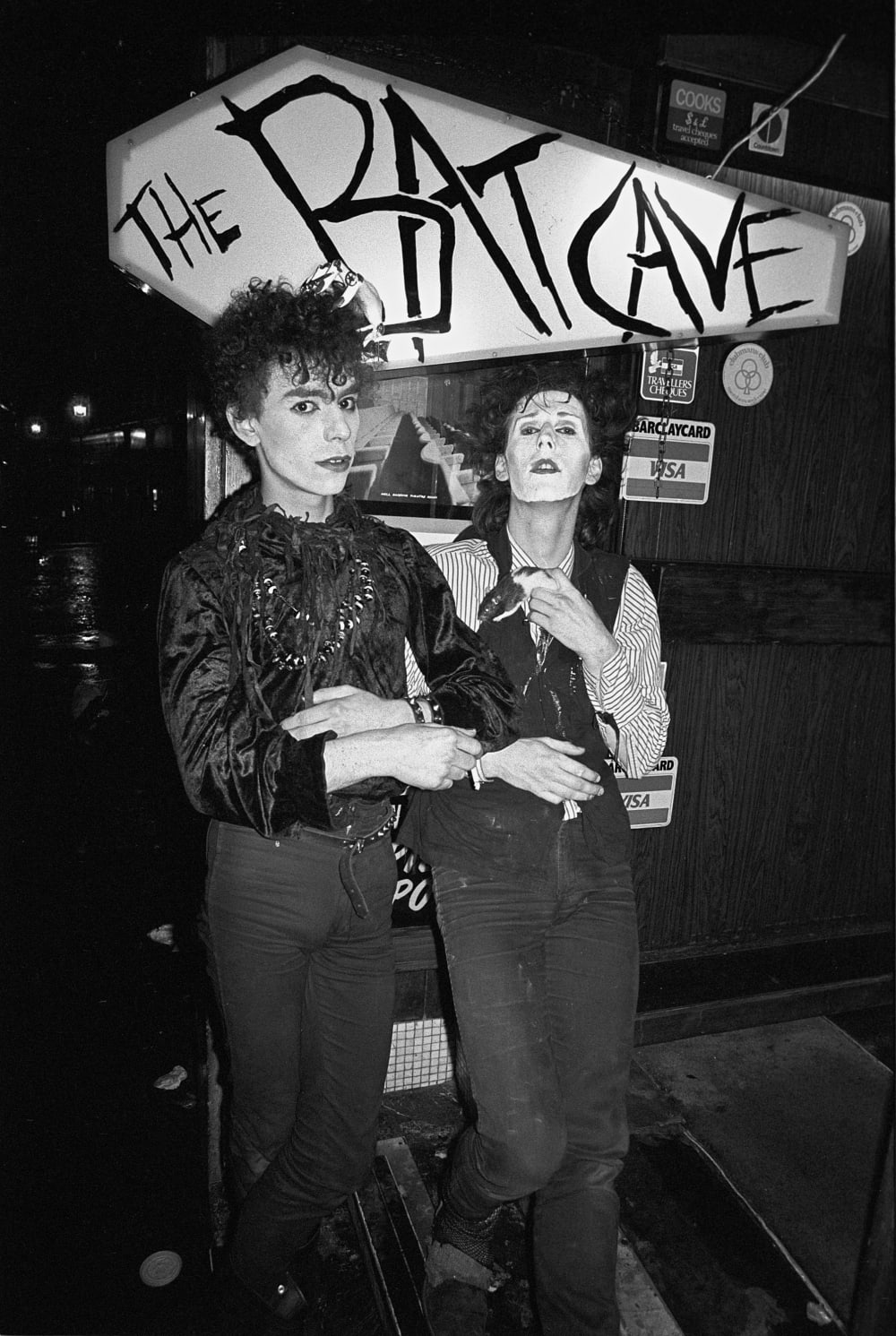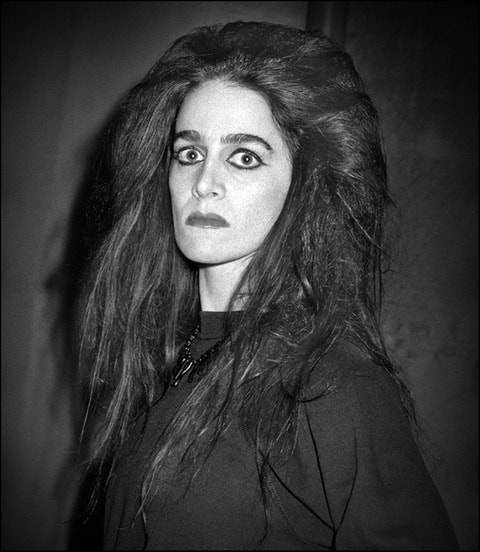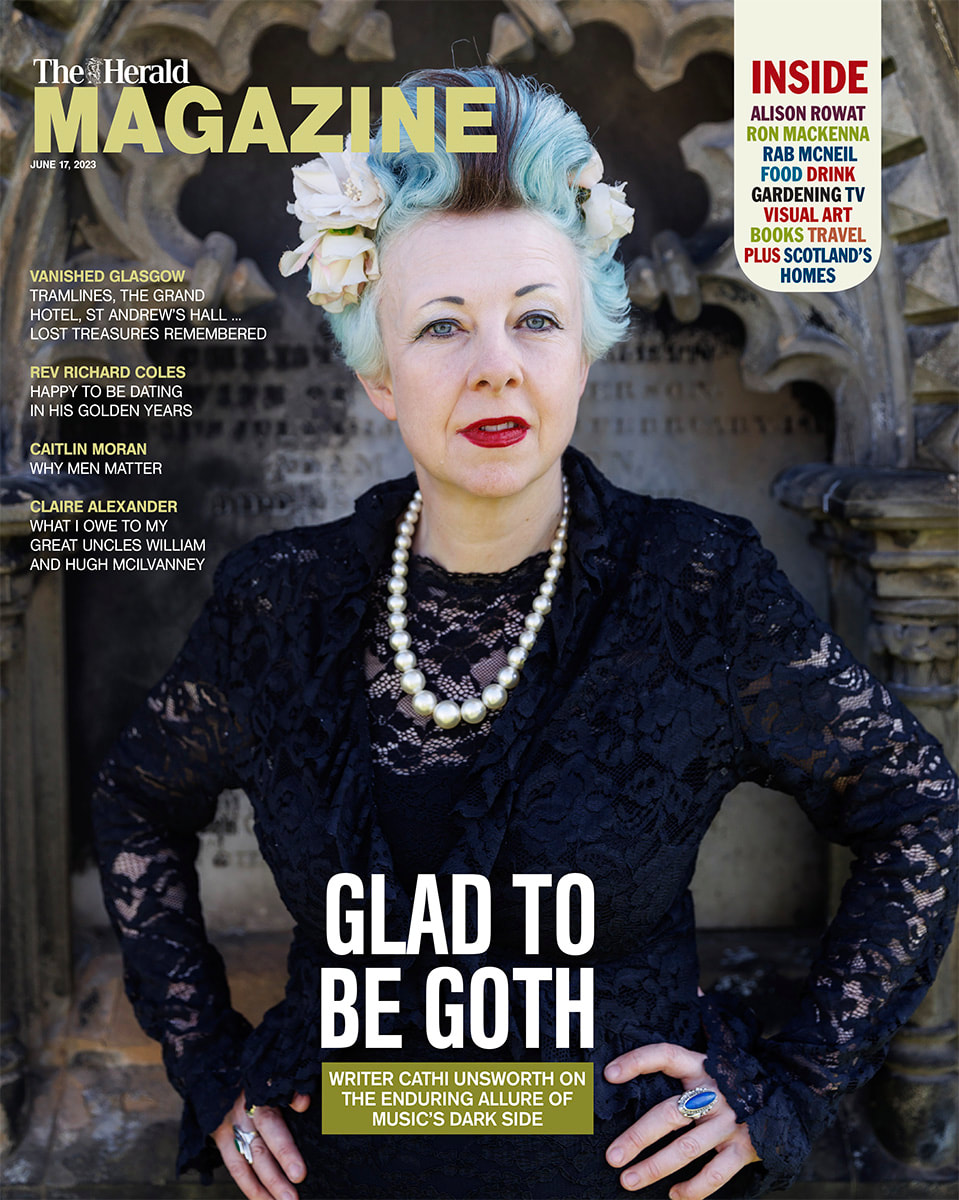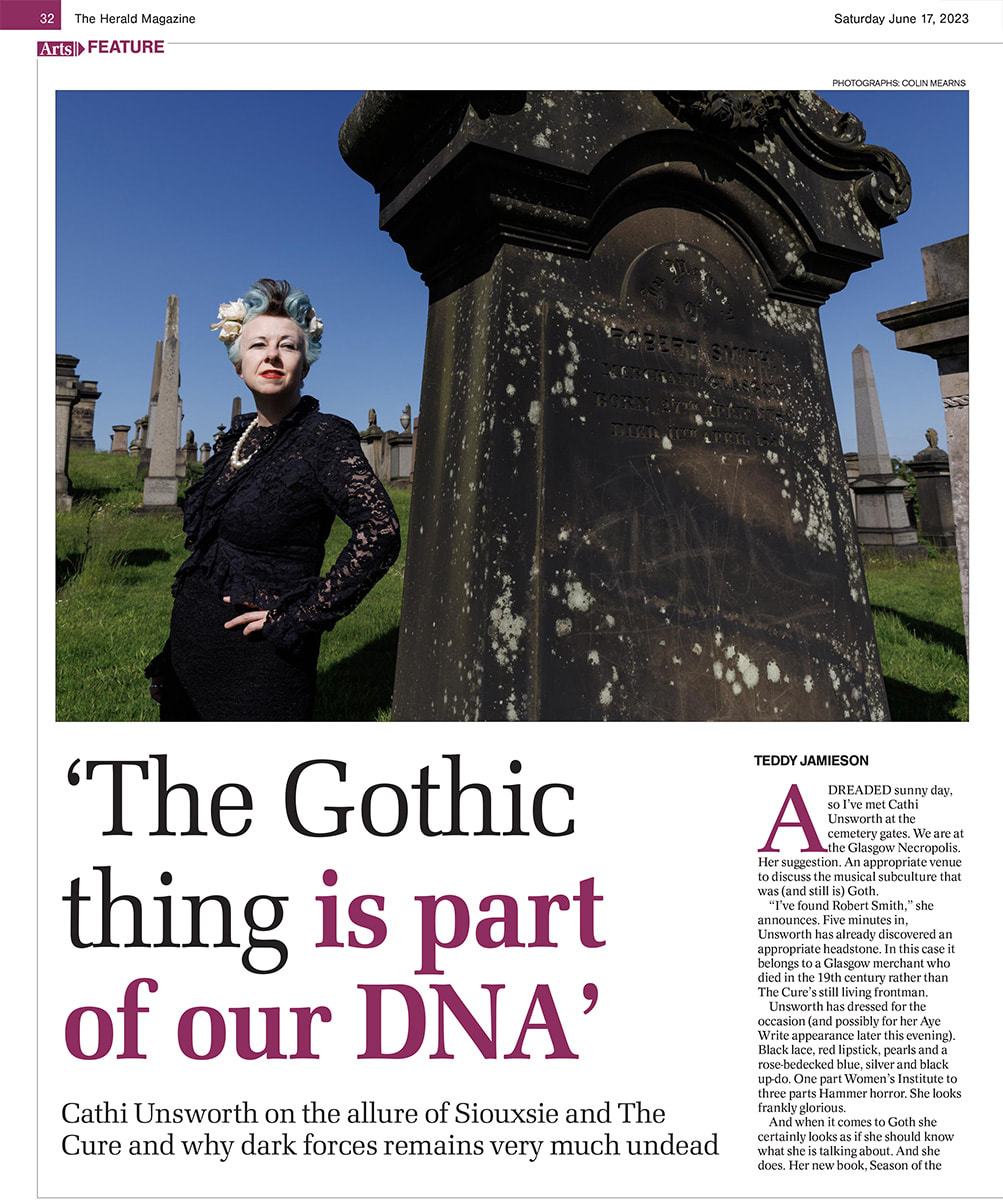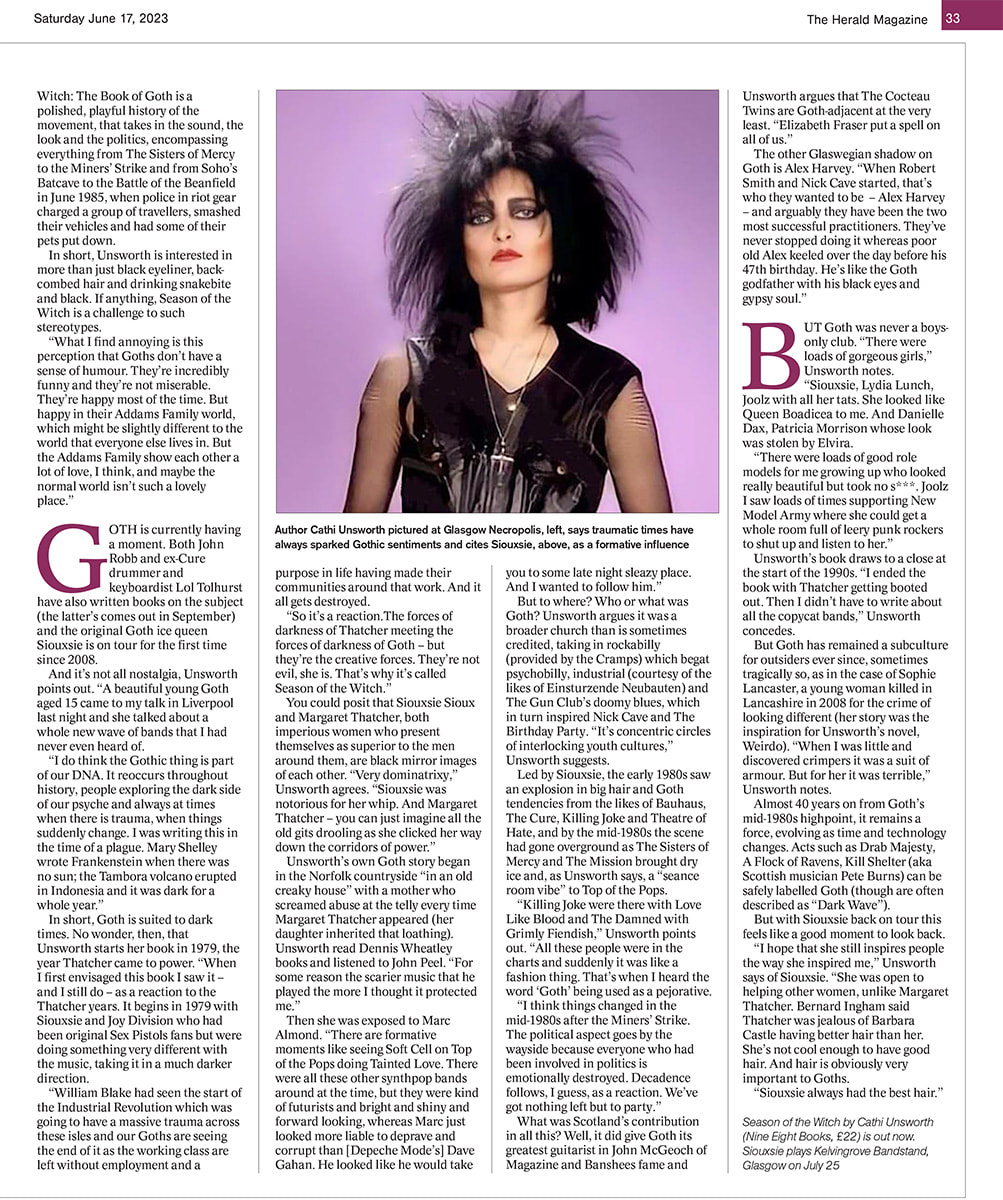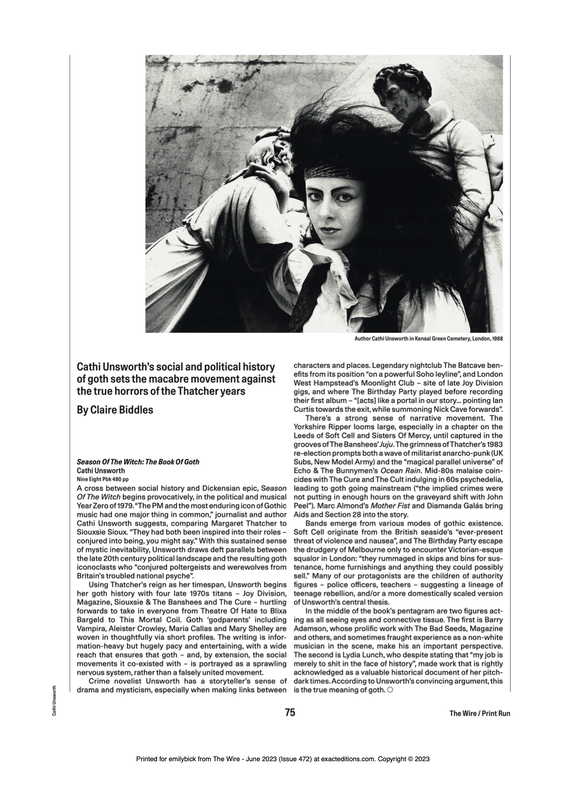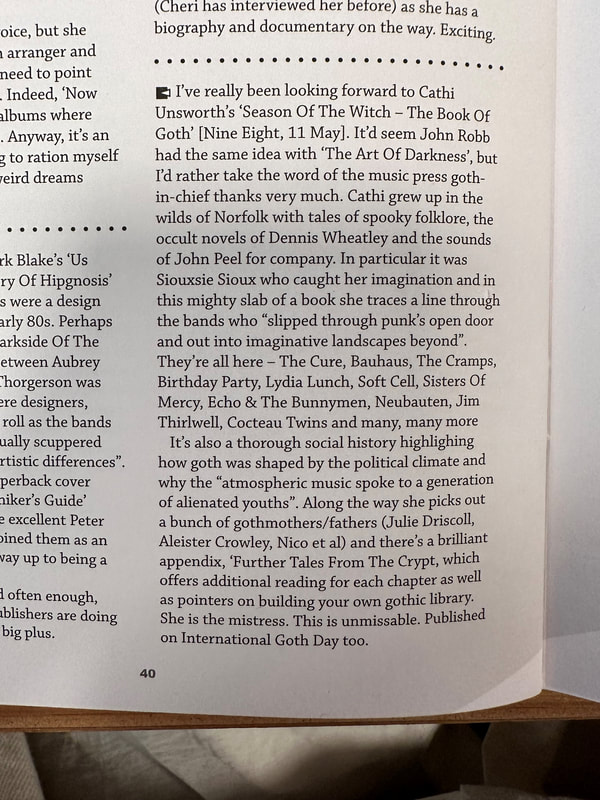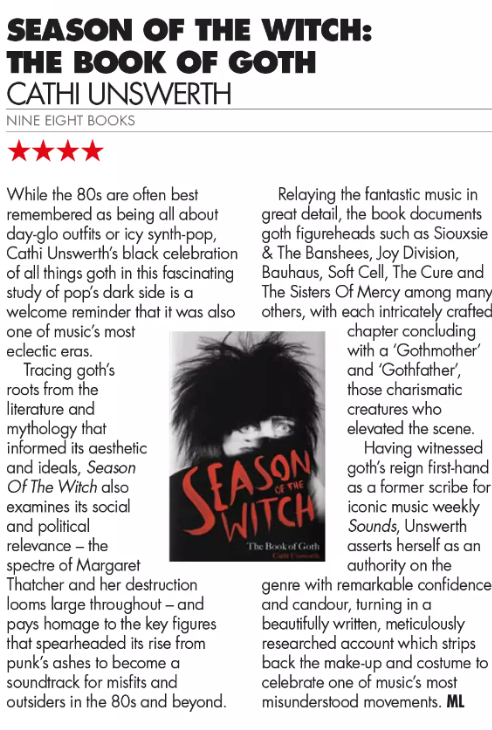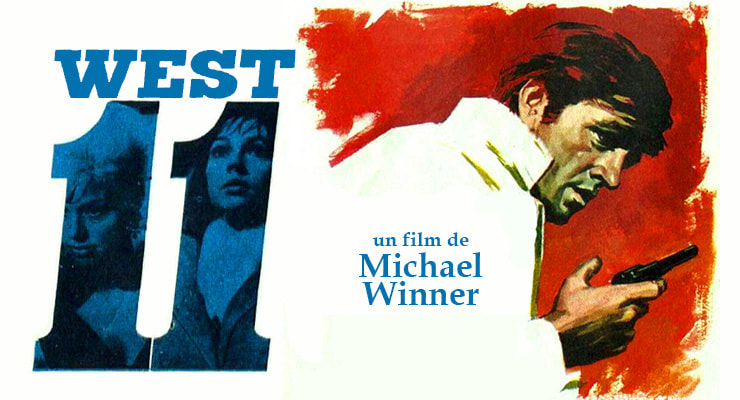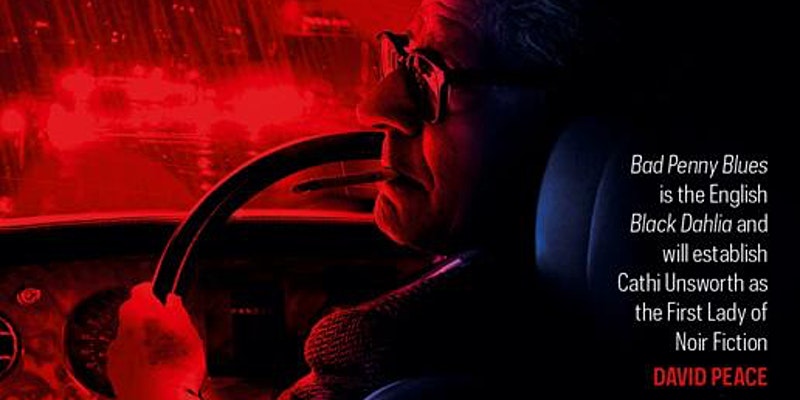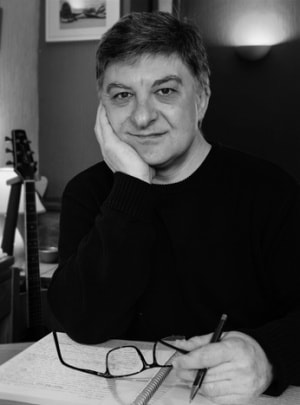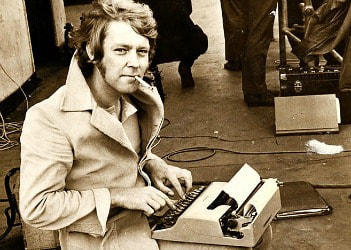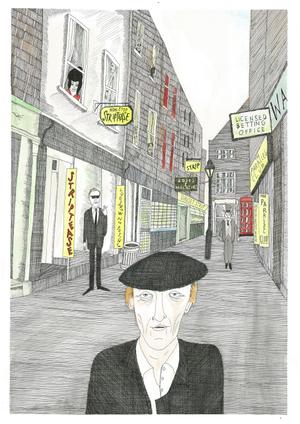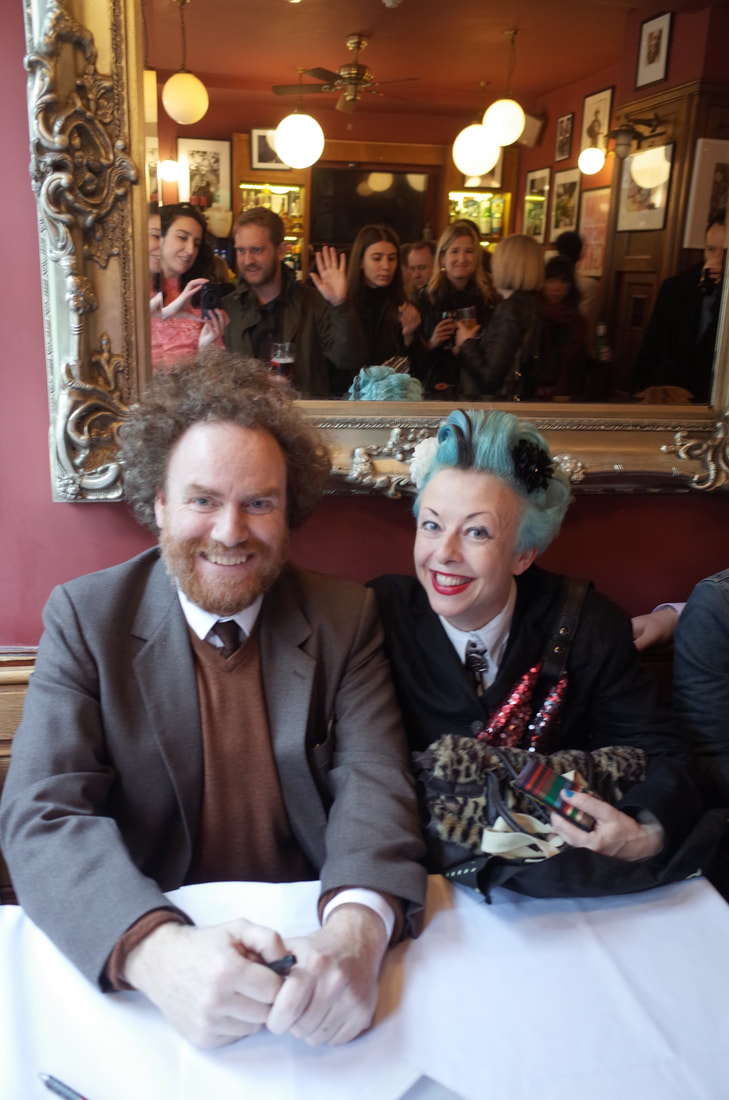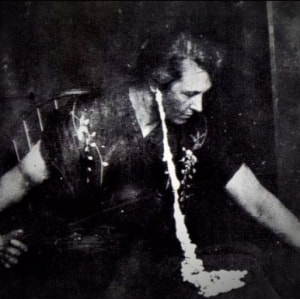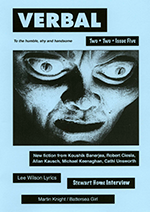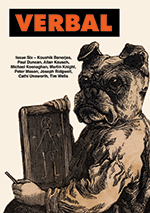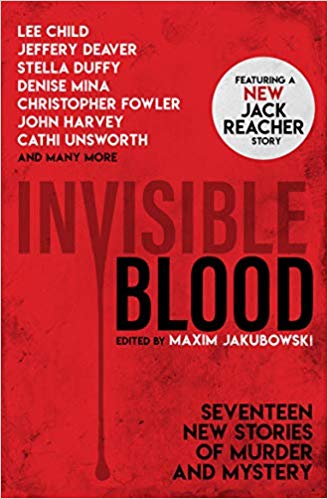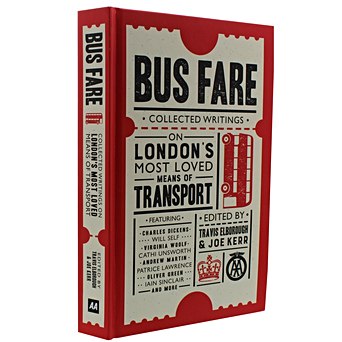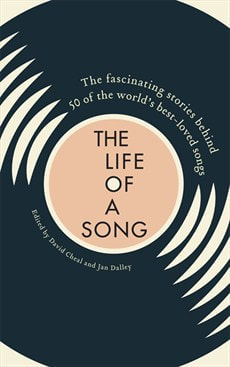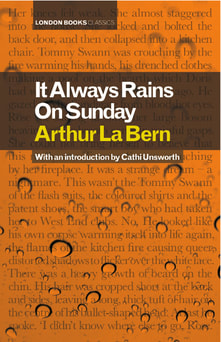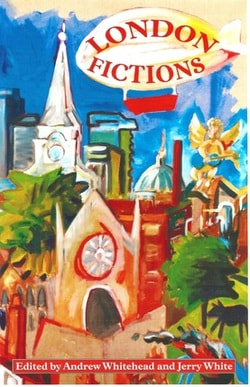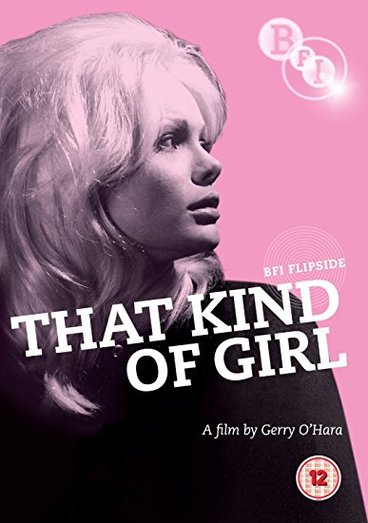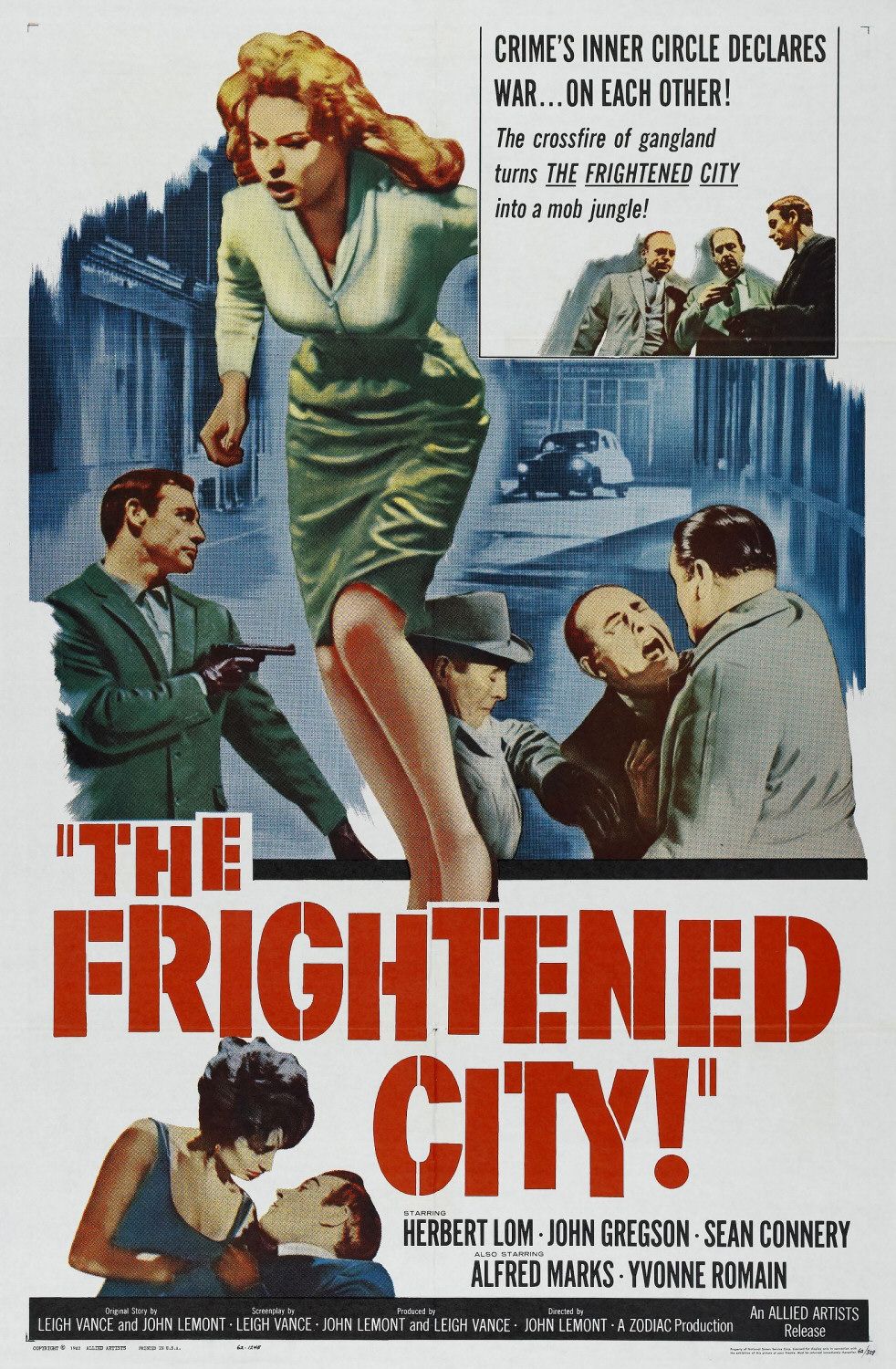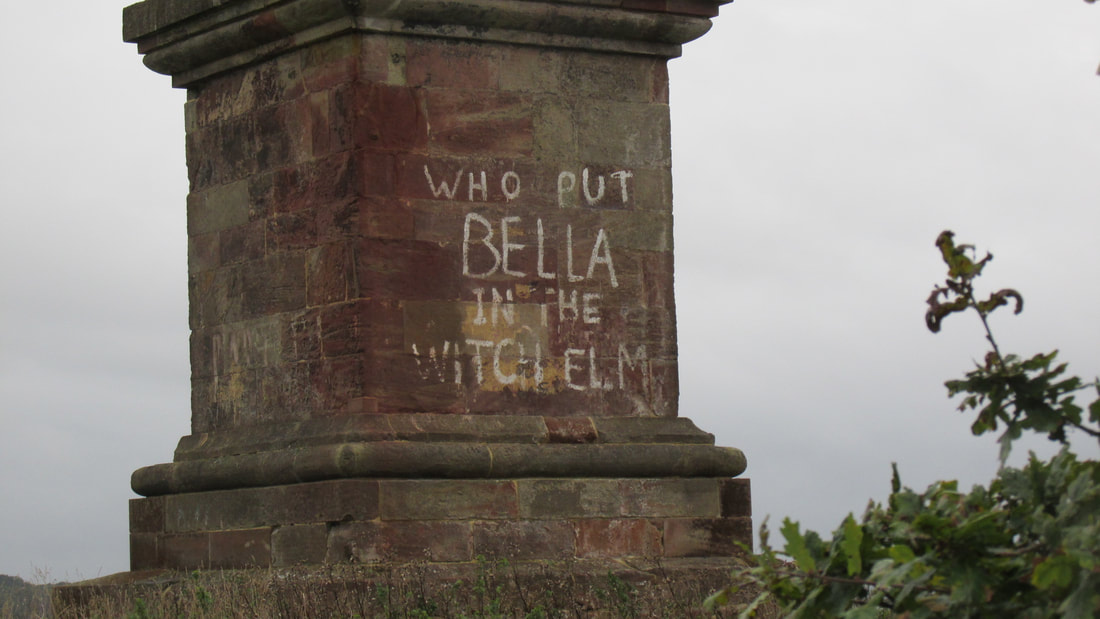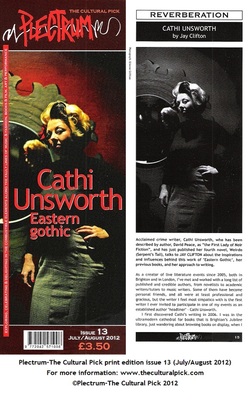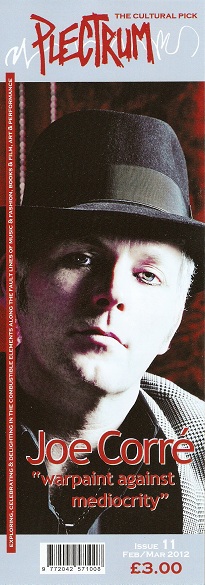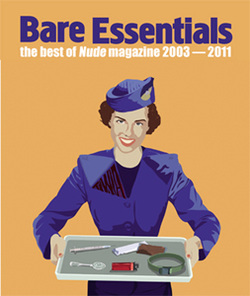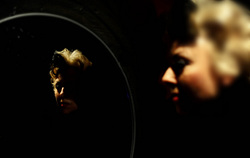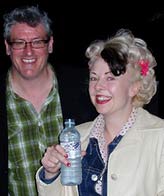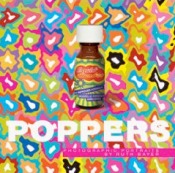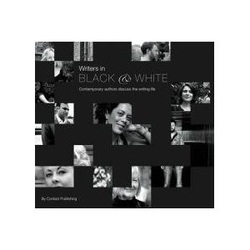NEW SPANISH EDITION:
TEMPORADA DE BRUJAS
FEATURES IN SPANISH

The all new SPANISH edition of SEASON OF THE WITCH is now available from CONTRA publishing. Beautifully designed and with photographs and extensive new footnotes throughout, it comes complete with a beautiful bookmark! For more information and to order, go HERE
• TEMPORADA DE BRUJAS in El Diario HERE
• In Mondo Sonoro HERE
• In El Periódico HERE
• AUDIO interview with Gustavo Iglesias of Radio 3 (Spain) HERE (starts 20 mins in)
CATHI'S QUIETUS LOW CULTURE ESSAY ON TIM SMITH
NEW FEATURE! CATHI IN AUXILLIARY MAGAZINE
NEW FEATURE: REFLECTIONS ON SOTW IN TOXIC GRAFITY
Illustration by HYD
NEW! CATHI IN THE IRISH TIMES, SATURDAY 23 SEPT
NEW! CATHI IN THE DAILY TELEGRAPH, SATURDAY 23 SEPT
NEW FEATURE! CATHI IN UAL SUBCULTURES
NEW FEATURE! CATHI AT GOTHSHOP
Interview by DAVE DARCY EDMOND and featuring photography by David Arnoff, Caroline Bonarde, Tony Bock, George Dubous, Kevin Haskins, Dino Ignani, Richard Kern, @no.one.studio.london, Derek Ridgers, Ray Stevenson, Mick Mercer, Innes Reekie, and Gena Tuso
Click HERE for the Goth Goods From The Gate!
NEW FEATURE!
CATHI IN THE HERALD
NEW! CATHI IN THE WIRE
NEW! SEASON OF THE WITCH REVIEWED IN 3AM
NEW! CATHI IN OUTSIDELEFT MUSIC
And full interview with Cathi HERE
NEW!: CATHI IN THE IDLER
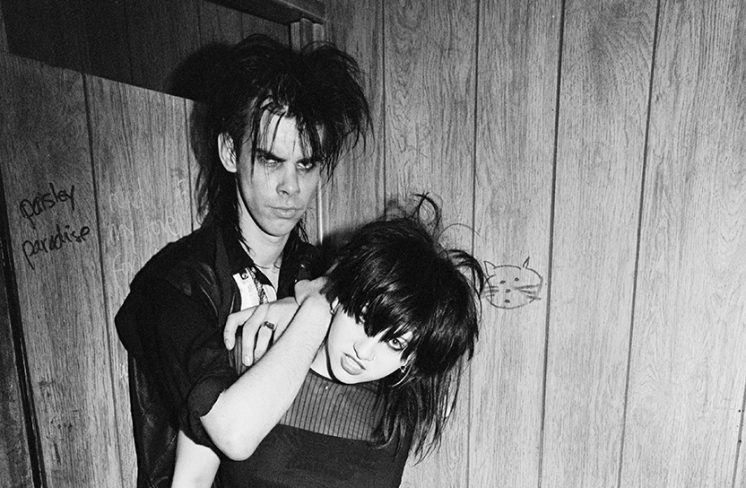
NEW REVIEW: SEASON OF THE WITCH IN MOONBUILDING
NEW REVIEW: SEASON OF THE WITCH IN CLASSIC POP
NEW FEATURE: IT'S GOTH OF THE POPS WITH CATHI IN 3AM MAGAZINE
CATHI IN SONGS FROM THE UNDERGROUND
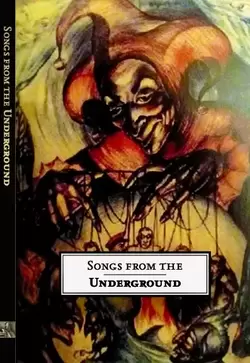
INTO THE GROVE:
CATHI ON WEST 11 AND THE L-SHAPED ROOM
This text – published by DVDClassik in English and French – was originally given as two screen talks at the Duke of York's Picture House for the 2014 Brighton Film Festival.
Read it HERE
BAD PENNY BLUES REVIEWED ON 3AM
BAD PENNY BLUES ON CRIMEFICTIONLOVER
NICK TRIPLOW ON
BAD PENNY BLUES
AT CRIMESQUAD
Read the full review HERE
FEATURES, ESSAYS & ARTICLES
CATHI'S LOVE LETTER TO TED LEWIS AT CRIMESQUAD
You can order all these books HERE
CATHI'S TOP 3O BRIT GRIT FILMS ON DVDCLASSIK
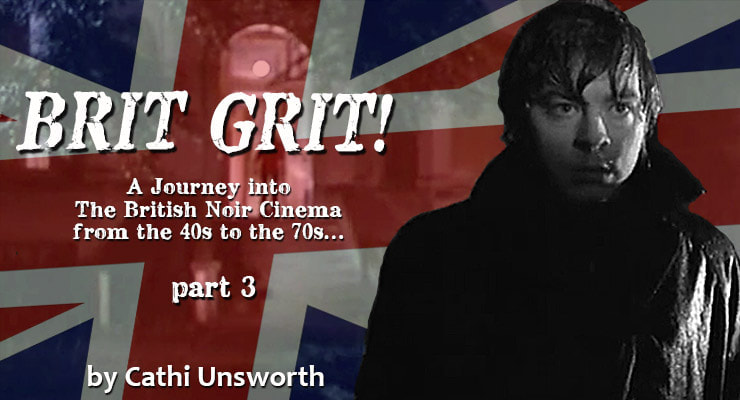
Part two 1959-64 HERE
Part one 1947-59 HERE
CATHI IN SPIRITUS SOHO BY ROBERT RUBBISH
Here are Robert and Cathi at the launch:
CATHI ON THE TRIAL OF HELEN DUNCAN AT
THE REVISIONIST
FEMME MAGNIFIQUE
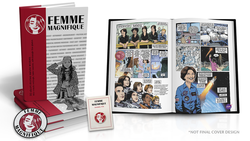
CATHI IN VERBAL
Cathi contributed a new short story entitled 'Bring Out Your Dead' to VERBAL 5, the zine edited by Football Factory/Human Punk legend and London Books maestro John King. Fans of Bad Penny Blues please note that 'Bring Out Your Dead' features the return of Dave Dilworth and his Diaboliks from that book, as well as a related in-depth interview with Stewart Home, whose book Tainted Love, about his mother Julia Callan Thompson, is set very much in the same milieu. There is also new writing from Koushik Banerjea, Robert Ciesla, Allan Kausch, Michael Keenagahan, lyrics from Lee Wilson and some family history from Martin Knight. All yours for £3.50 from HERE
CATHI IN
INVISIBLE BLOOD
To get a copy of the book, go HERE
CATHI IN BUS FARE:
AN ANTHOLOGY ABOUT THE LONDON BUS
FEATURING: CHARLES DICKENS, WILL SELF, IAIN SINCLAR, VIRGINIA WOOFE, ELIZABETH WILSON, CATHI UNSWORTH
Not merely a vital component of the city’s infrastructure, buses are equally embedded in London's culture; written about, sung about, joked about, filmed, painted (and painted on), advertised, and celebrated in myriad ways. For the many thousands of people who have depended on them for a livelihood – drivers, conductors, cleaners, mechanics, inspectors – they have created their own world, complete with a distinct language, with uniforms, with places, and with men and women of every imaginable culture.
This new collection aims to celebrate the unique relationship that Londoners have with their most important mode of transport, telling you all the things you never knew about London’s lifeblood and how it’s kept the capital moving for more than a century. Tourists take the tube – but real Londoners take the bus.
Every purchase supports the London Transport Museum’s charitable work.
CATHI IN
THE LIFE OF A SONG
Published by Brewers/Financial Times the book is in bookshops now
priced £12.99
For more information, please go HERE
IT ALWAYS RAINS ON SUNDAY
by Arthur La Bern
London Books re-release of a classic with an introduction by CATHI UNSWORTH
Born into the Islington streets run by Darby Sabini and his gang, Arthur was a Fleet Street crime reporter and war correspondent. Many of his novels were adapted for the screen, including GOODBYE PICCADILLY, FAREWELL LEICESTER SQUARE, which became Alfred Hitchcock's equally notorious FRENZY – which Arthur hated. He lived high on the hog and then fell from that distance, sleeping rough on Brighton beach towards the end of his days. Every experience filtered through to his hauntingly evocative descriptions of wide boys, working girls, hardbitten hacks and the coppers that chase them down, capturing vistas of a lost London.
IT ALWAYS RAINS ON SUNDAY is available from LONDON BOOKS website, price £11.99. You can order a copy and find out more about other LONDON BOOKS titles HERE
Cathi in London Fictions on Lynne Reid Banks' The L-Shaped Room
To order from Amazon, please go HERE
BFI Flipside Man of Violence sleevenotes
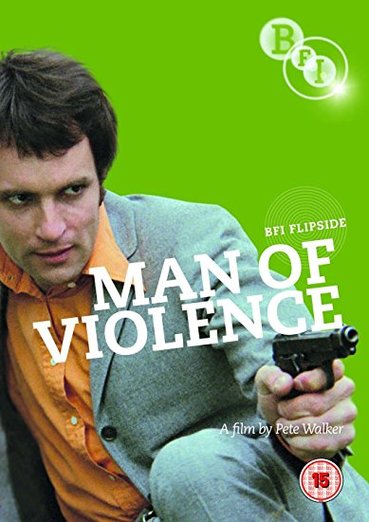
Illustrated booklet with newly commissioned contributions from Cathi Unsworth, screenwriter and critic David McGillivray, and film historian Julian Petley.
BUY IT HERE

